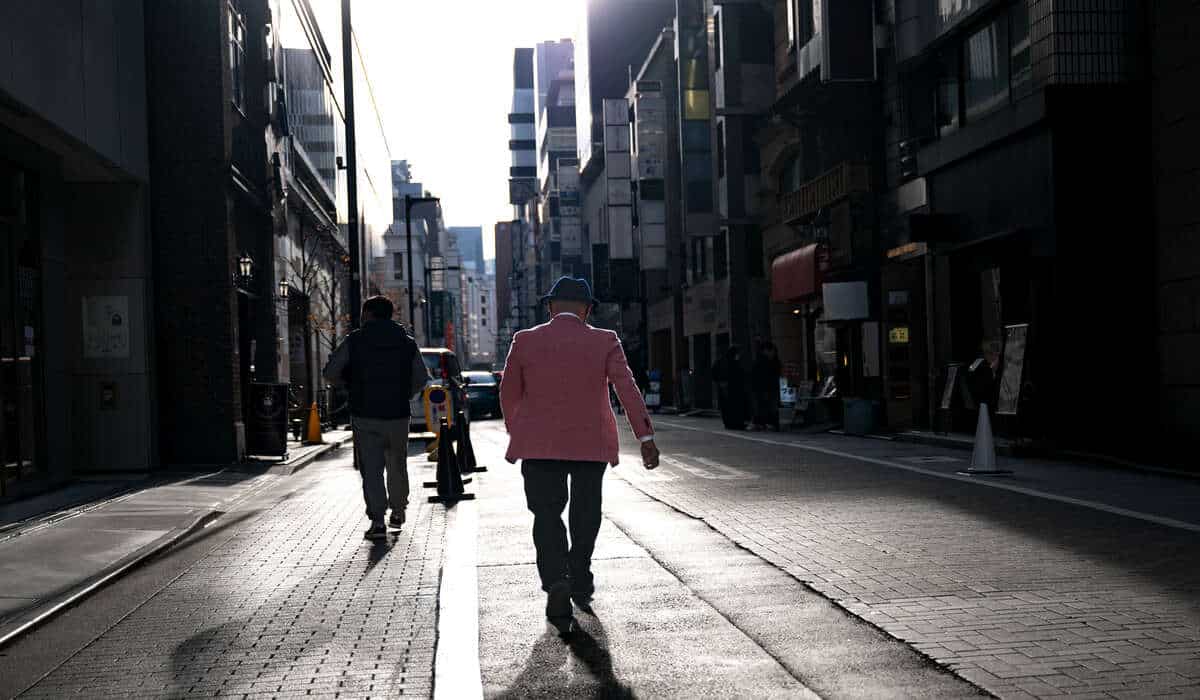Table of Contents
Introduction
Cinematic street photography is more than just taking pictures; it’s an immersive art form that seamlessly merges the unpredictable energy of street scenes with the visual storytelling of cinema. This guide isn’t about long-winded explanations. Instead, it’s a straightforward dive into the heart of this genre, giving you practical insights on gear selection, shooting techniques, and the transformative power of post-processing.
Equipment Essentials
When it comes to gear, both high-end DSLRs and mirrorless cameras have their merits, offering unparalleled control and quality. But let’s not underestimate the power of a well-utilized smartphone camera. Key to achieving that cinematic look are prime lenses with wide apertures, such as f/1.4 or f/1.8, ideal for creating a shallow depth of field and that beautiful, soft bokeh effect. For those looking to add a dramatic edge to their urban tales, investing in a sturdy tripod and a set of neutral density filters for those ethereal long exposure shots is essential.
Importance of the Scene
Scouting the perfect location is an art in itself. It’s about tapping into the soul of the urban landscape, understanding the dance of light and shadow, and capturing the rhythm of life that pulsates through the streets. The soft, diffused light of early mornings can paint your scene with a dreamlike quality, while the rich, golden hues of late afternoons can add a dramatic, almost theatrical effect. When night falls, the city transforms again, with artificial lights casting dramatic shadows and creating stark, captivating contrasts.
Shooting Techniques
Lighting and Composition
Effective lighting is crucial in cinematic photography. Look for areas where light and shadow play together to create a dramatic, almost theatrical effect. Compositionally, your goal is to narrate a story through each frame. Use established techniques like the rule of thirds and leading lines, but don’t be afraid to experiment. Whether it’s shooting from a low angle or finding a unique vantage point, each shot should be a quest for a new perspective.
Capturing the Moment
In the world of street photography, spontaneity is king. It’s about honing your ability to anticipate and swiftly capture those ephemeral, unscripted moments of everyday life. This requires patience, a keen sense of observation, and a deep understanding of the ebb and flow of street dynamics.
Creative Perspectives
The best street photographs often come from breaking the mold. Look for unique shooting opportunities – perhaps through a rain-soaked window, the gaps in a fence, or the play of light and shadow. It’s about seeing the ordinary through an extraordinary lens, turning mundane moments into captivating visual stories.
Post-Processing Magic
Color Grading
The digital darkroom is where your photographs undergo a transformation. Through color grading, you can set the emotional tone of your image. Whether it’s infusing a cool, desaturated tone for a somber scene or embracing vibrant colors for energetic street festivals, the way you manipulate colors can significantly alter the narrative and impact of your photo.
Cropping and Framing
Effective cropping and framing can turn a good photo into a great one. It’s about striking the right balance – eliminating distractions to focus on the subject, yet retaining enough context to maintain the essence of the street scene.
Adding Effects and Video Editing
Beyond stills, incorporating effects like grain or vignettes can lend a timeless quality to your work. For those exploring street videography, beginning with a basic, free video editor can be a game-changer. These tools often offer an array of features that can elevate your video content, allowing you to experiment with color grading, trimming, and adding dynamic elements to your street stories.
Text to Video
In the ever-evolving landscape of digital content creation, the fusion of artificial intelligence and video production stands as a revolutionary frontier. AI text-to-video technology seamlessly bridges the gap between textual narratives and visual storytelling, offering a dynamic platform for expressing ideas and engaging audiences. By harnessing the power of machine learning algorithms, this innovation automates the process of transforming written scripts into captivating video content, empowering creators with efficiency and creativity.
Building a Portfolio
Selecting Your Best Work
Your portfolio is your visual voice. It should not only showcase your technical prowess but also reflect the diverse, compelling stories you’ve captured. Each image should be a piece of a larger narrative, one that distinctly represents your style and vision.
Online Presentation
In the digital era, your online presence is your global gallery. Utilize platforms like Instagram, Flickr, or your personal website not just as a display of your work, but as a bridge to connect with fellow photographers, potential clients, and a broader audience. Keep your online portfolio organized, accessible, and a true reflection of your best work.
Workshops and Courses
Photography is a journey of lifelong learning. Engaging in workshops and online courses can expose you to new techniques, fresh ideas, and different perspectives. Learning from seasoned photographers can provide invaluable insights, helping you refine your style and approach.
Community Engagement
Active participation in photography communities, both virtual and physical, can be incredibly rewarding. These communities offer a wealth of resources – from constructive feedback and support to opportunities for collaboration and growth.
Conclusion
Cinematic street photography is a continuous journey of discovery, creativity, and expression. It requires patience, relentless practice, and a burning passion to capture the fleeting moments and untold stories of the streets. Embrace every experience as an opportunity to refine your vision and remember, each street corner, every passing moment, is a new chapter waiting to be told through the lens of your camera.


